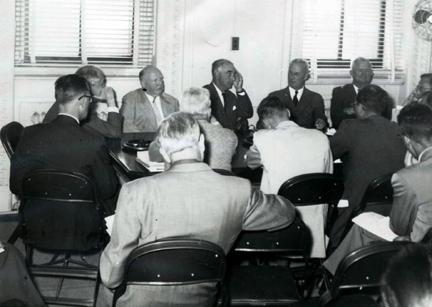
Clay committee meeting, Eisenhower Library
The Bill

Clay committee meeting, Eisenhower Library
Clay and his team addressed America’s growing needs for safe transportation. Their report stated that over one million Americans were injured and 36,000 people were killed per year from inadequate roadways. Poor road conditions raised shipping costs (approximately $5 billion a year), passed onto consumers. The report also stated that population growth would create traffic congestion. Additionally, the Cold War brought the possibility of mass evacuation in the event of an attack.
Clay proposed a plan where the federal government paid 90% of the cost and states paid the balance. It required $25 billion in government bonds and gas-tax revenue. Congress rejected it, but eventually agreed to a “pay as you go” model, keeping the 90/10 cost share with states. The government’s portion was funded by gas-tax revenue and highway user taxes. The FAHA was signed into law on June 29th, 1956. Construction started that year with US-40, now I-70, in Missouri. In 1992, the IHS was finished, when I-70 in Colorado was completed.